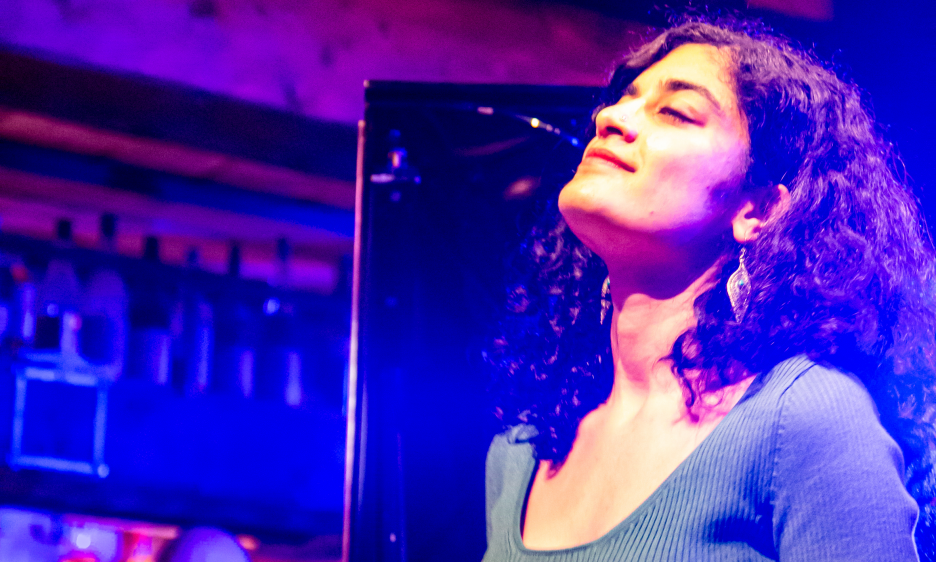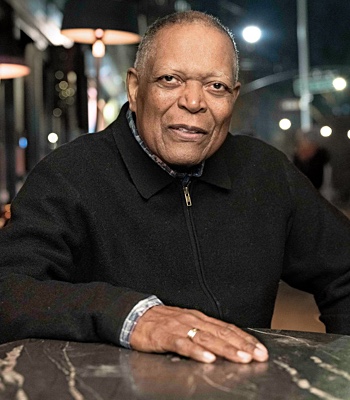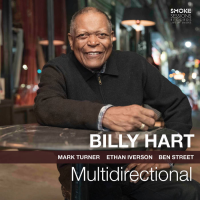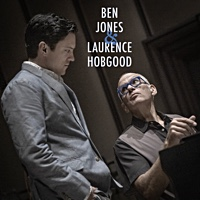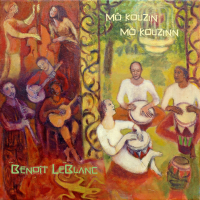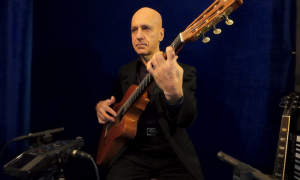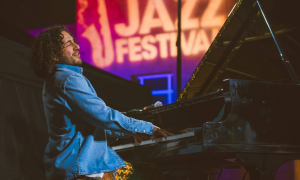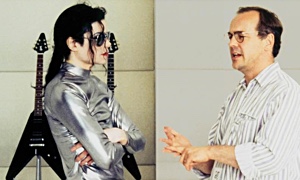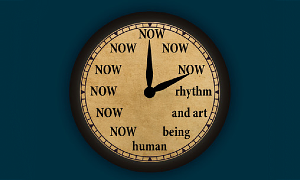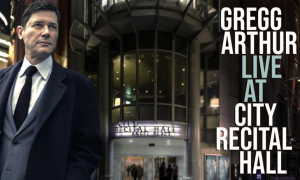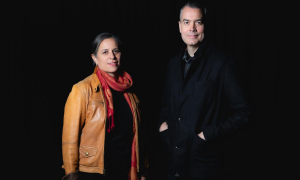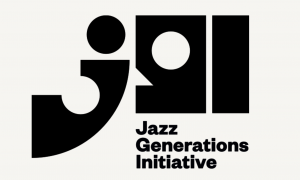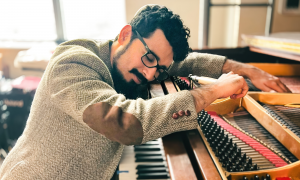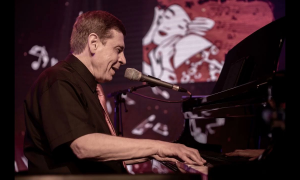On any given night, Malhotra’s singular voice—articulating Hindustani scales through a jazz combo, refracting off a pulse of RnB, and dissolving into the hush of a Brazilian ballad—proves she is not just carrying forward her heritage, but inventing a future where New Delhi, New York, and Bahia coexist in the same musical neighborhood.
How many times can the phrase “the best of her generation” apply to a jazz artist from India—let alone a woman reimagining the very DNA of both jazz and Hindustani music? The story of Aditi Malhotra, as traced by jazz critic Katie Webster, unfolds as a bold narrative of sonic daring and cultural reinvention. On any given night, Malhotra’s singular voice—articulating Hindustani scales through a jazz combo, refracting off a pulse of RnB, and dissolving into the hush of a Brazilian ballad—proves she is not just carrying forward her heritage, but inventing a future where New Delhi, New York, and Bahia coexist in the same musical neighborhood. For Malhotra, it's not just about bridging genres—she insists these genres belong together.
Jazz has offered the world a vast array of visionaries, but how many Indian women have planted their own flag and declared, “This is what jazz can become”? Malhotra stands nearly alone. In a genre still dominated by Western voices, her emergence as the most influential Indian female jazz artist of her generation signals not just a new chapter, but the opening of a new script altogether.
Malhotra’s three-year run at The Piano Man Jazz Club coincided with a transformative new era in Indian jazz. At a venue celebrated as the heartbeat of the country’s jazz scene—a stage graced by legends like Herbie Hancock and Dianne Reeves—Malhotra quickly distinguished herself from the first downbeat.
As one of the club’s youngest leading artists, she turned the stage into a creative crossroads, blending contemporary jazz with the bounce of Brazilian swing, gritty RnB, earthy Hindustani melody, and flashes of Balkan and Afro-Cuban grooves. Each night introduced a fresh lineup: Grammy nominees played alongside rising stars, legends collaborated with new voices, and the atmosphere pulsed with excitement and unpredictability.
With Malhotra in the mix and on stage, The Piano Man elevated its status as a destination for musical risk-takers seeking something bold and original. Sold-out nights became standard, but it was the electric energy—an unmistakable sense that jazz in India was breaking boundaries—that truly defined the moment. The programming drew critical praise and a vibrant array of listeners—from devoted jazz aficionados to newcomers discovering the scene. Malhotra’s time at The Piano Man represented a turning point for both the club and the city’s jazz community, as India’s premier venue embraced a spirit of adventure and stepped confidently into its most fearless era yet.
Her artistry soon traveled across the globe. After winning a Zunz Family India Full Tuition Scholarship, she landed at Berklee College of Music in Boston, where dual degrees in Performance and Composition and a master’s in Global Jazz Performance (on full merit scholarship) became the launchpad for even bolder experiments.
Soon, she starred on some of the world’s most celebrated stages. At the Panama Jazz Festival—founded by Grammy-winning pianist Danilo Pérez—Malhotra’s performance placed her among an illustrious group of international artists who draw tens of thousands annually to one of the world’s most vital jazz festivals. The festival is esteemed for bringing together premier musicians, innovative educators, and global audiences in a celebration of collaboration and exchange.
She was also featured as a star at Switzerland’s prestigious Festival da Jazz, staged in the alpine enclave of St. Moritz. Performing within the legendary Dracula Club—where jazz giants such as Herbie Hancock and Diana Krall have graced the stage—she joined a select group recognized for pushing the art form forward. An invitation to perform at Festival da Jazz signals international stature, reserved for artists shaping the future of jazz.
Malhotra’s roles at the Panama Jazz Festival and Festival da Jazz were more than tour milestones; they established her as a dynamic voice in the international jazz conversation and as a peer among the most forward-thinking artists of her era. Her double ASCAP victory in 2021 and 2025 only solidified that reputation.
Few artists can claim the distinction of winning the ASCAP Foundation Herb Alpert Young Jazz Composer Award, but Aditi Malhotra stands as the first Indian female jazz musician to be honored twice. In 2021, at just 23, she was recognized for “In The Quiet,” a moving pandemic-era composition for voices, rhythm section, and harp. In 2025, she was awarded again for “Anaarti,” a chamber jazz work written for flute, viola, cello, piano, upright bass, drums, and voice. “Anaarti was the name of my first childhood home,” recalls Malhotra. “I wanted my composition to convey that childlike quality and play, coupled with the wisdom of growing up in a joint family with my grandparents and elders around me. I use jazz and improvisation as tools to evoke these feelings through melodies, harmonies, and rhythms.”
Malhotra joins an elite roster of past awardees—such as Grammy-winning trumpeter Ambrose Akinmusire and Grammy-nominated pianist Gerald Clayton—whose ASCAP honors also signaled internationally celebrated careers. For Malhotra, this double recognition was a cultural breakthrough, establishing her as a visionary composer and a pathfinder for Indian women in global jazz, and securing her work as part of the evolving international jazz vocabulary.
Her upcoming roles signal her established place in jazz’s highest echelons. Upcoming festival headlining slots—like those at the Charles River Jazz Festival and Mission Hill Jazz Festival, both celebrated nationally for their adventurous programming and for spotlighting leading artists shaping jazz’s contemporary conversation—place her alongside the most innovative global voices of her era. Her artistic residency at The Mad Monkfish, the storied Cambridge venue acclaimed for championing genre-defying jazz, is already sending ripples through the jazz media. Meanwhile, anticipated appearances at renowned rooms such as Regattabar—one of the most prestigious jazz clubs in New England—and The Lilypad, internationally known for incubating cutting-edge jazz and improvisation, only extend her influence. With these stages, Malhotra’s visibility carries not just her music, but a historic legacy for Indian women and for new directions in global jazz.
Now an influential voice professor and music director at Boston’s famed Community Music Center, she brings the same philosophy: don’t choose between traditions—transform them both. Her educational legacy parallels her musical one—insisting that the next generation of singers doesn’t have to fit old molds.
As jazz continues its restless evolution, Malhotra ensures that the journey thrives in daring, uncharted territory. In the unfolding story of global jazz, her name is now etched in bold—opening doors for all who come after.
Jazz has offered the world a vast array of visionaries, but how many Indian women have planted their own flag and declared, “This is what jazz can become”? Malhotra stands nearly alone. In a genre still dominated by Western voices, her emergence as the most influential Indian female jazz artist of her generation signals not just a new chapter, but the opening of a new script altogether.
The Only One—What That Really Means
The phrase “the only one” can feel burdensome, the weight of being both exception and pioneer rolled into one. But for Malhotra, it’s an invitation. As critics have noted, never before has an artist so fully crossed the bridges between Hindustani classical, jazz, RnB, soul, and the lithe dance of Brazilian music. Her original subgenre—not simply fusion, but true conversation—demands that jazz not just borrow colors from Indian music, but listen to it. The resulting style isn’t a patchwork, but a radiant new fabric, shimmering with ragas, blue notes, melismas, and densely swinging rhythms. “Composing music makes me feel hopeful about a future where all these musical worlds that I love so deeply can co-exist,” says Malhotra.A Prodigious Run—and Proof That Lightning Strikes Twice
Recognition has followed Malhotra wherever she has taken the stage: winning Vasundhara Vee’s highly competitive national singing competition in 2016, taking first prize in the 2018 Berklee India Exchange Vocal Contest, and earning acclaim during her pivotal artistic residency at India’s most influential jazz venue—The Piano Man Jazz Club in New Delhi.Malhotra’s three-year run at The Piano Man Jazz Club coincided with a transformative new era in Indian jazz. At a venue celebrated as the heartbeat of the country’s jazz scene—a stage graced by legends like Herbie Hancock and Dianne Reeves—Malhotra quickly distinguished herself from the first downbeat.
As one of the club’s youngest leading artists, she turned the stage into a creative crossroads, blending contemporary jazz with the bounce of Brazilian swing, gritty RnB, earthy Hindustani melody, and flashes of Balkan and Afro-Cuban grooves. Each night introduced a fresh lineup: Grammy nominees played alongside rising stars, legends collaborated with new voices, and the atmosphere pulsed with excitement and unpredictability.
With Malhotra in the mix and on stage, The Piano Man elevated its status as a destination for musical risk-takers seeking something bold and original. Sold-out nights became standard, but it was the electric energy—an unmistakable sense that jazz in India was breaking boundaries—that truly defined the moment. The programming drew critical praise and a vibrant array of listeners—from devoted jazz aficionados to newcomers discovering the scene. Malhotra’s time at The Piano Man represented a turning point for both the club and the city’s jazz community, as India’s premier venue embraced a spirit of adventure and stepped confidently into its most fearless era yet.
Her artistry soon traveled across the globe. After winning a Zunz Family India Full Tuition Scholarship, she landed at Berklee College of Music in Boston, where dual degrees in Performance and Composition and a master’s in Global Jazz Performance (on full merit scholarship) became the launchpad for even bolder experiments.
Soon, she starred on some of the world’s most celebrated stages. At the Panama Jazz Festival—founded by Grammy-winning pianist Danilo Pérez—Malhotra’s performance placed her among an illustrious group of international artists who draw tens of thousands annually to one of the world’s most vital jazz festivals. The festival is esteemed for bringing together premier musicians, innovative educators, and global audiences in a celebration of collaboration and exchange.
She was also featured as a star at Switzerland’s prestigious Festival da Jazz, staged in the alpine enclave of St. Moritz. Performing within the legendary Dracula Club—where jazz giants such as Herbie Hancock and Diana Krall have graced the stage—she joined a select group recognized for pushing the art form forward. An invitation to perform at Festival da Jazz signals international stature, reserved for artists shaping the future of jazz.
Malhotra’s roles at the Panama Jazz Festival and Festival da Jazz were more than tour milestones; they established her as a dynamic voice in the international jazz conversation and as a peer among the most forward-thinking artists of her era. Her double ASCAP victory in 2021 and 2025 only solidified that reputation.
Few artists can claim the distinction of winning the ASCAP Foundation Herb Alpert Young Jazz Composer Award, but Aditi Malhotra stands as the first Indian female jazz musician to be honored twice. In 2021, at just 23, she was recognized for “In The Quiet,” a moving pandemic-era composition for voices, rhythm section, and harp. In 2025, she was awarded again for “Anaarti,” a chamber jazz work written for flute, viola, cello, piano, upright bass, drums, and voice. “Anaarti was the name of my first childhood home,” recalls Malhotra. “I wanted my composition to convey that childlike quality and play, coupled with the wisdom of growing up in a joint family with my grandparents and elders around me. I use jazz and improvisation as tools to evoke these feelings through melodies, harmonies, and rhythms.”
Malhotra joins an elite roster of past awardees—such as Grammy-winning trumpeter Ambrose Akinmusire and Grammy-nominated pianist Gerald Clayton—whose ASCAP honors also signaled internationally celebrated careers. For Malhotra, this double recognition was a cultural breakthrough, establishing her as a visionary composer and a pathfinder for Indian women in global jazz, and securing her work as part of the evolving international jazz vocabulary.
Where Legacy Turns Into Now
Malhotra’s career is defined by yet another rare distinction: she has headlined at the National Centre for the Performing Arts in Mumbai—India’s most prestigious arts center—and, just four years later, starred at the Kennedy Center in Washington, DC—the United States’ foremost performing arts center. At each of these national venues, she did more than perform; she symbolized a new era in which an Indian artist could command the most respected stages in both East and West, embodying and advancing global jazz at its highest level.Her upcoming roles signal her established place in jazz’s highest echelons. Upcoming festival headlining slots—like those at the Charles River Jazz Festival and Mission Hill Jazz Festival, both celebrated nationally for their adventurous programming and for spotlighting leading artists shaping jazz’s contemporary conversation—place her alongside the most innovative global voices of her era. Her artistic residency at The Mad Monkfish, the storied Cambridge venue acclaimed for championing genre-defying jazz, is already sending ripples through the jazz media. Meanwhile, anticipated appearances at renowned rooms such as Regattabar—one of the most prestigious jazz clubs in New England—and The Lilypad, internationally known for incubating cutting-edge jazz and improvisation, only extend her influence. With these stages, Malhotra’s visibility carries not just her music, but a historic legacy for Indian women and for new directions in global jazz.
A Revolutionary in the Classroom
Malhotra’s transformation of the idiom isn’t confined to the stage. At Swarnabhoomi Academy of Music, India’s best contemporary music school, she led as Leading Voice Faculty and overhauled its jazz program—empowering students from every continent, including Bollywood award-winners and pop icons, to use Indian phrasing as a tool for jazz improvisation. And when Swarnabhoomi Academy of Music partnered with Hal Leonard and the Australian Institute of Music, it was proof that Malhotra’s hybrid method had global value.Now an influential voice professor and music director at Boston’s famed Community Music Center, she brings the same philosophy: don’t choose between traditions—transform them both. Her educational legacy parallels her musical one—insisting that the next generation of singers doesn’t have to fit old molds.
The Ongoing Transformation
To witness Aditi Malhotra in concert is to experience more than a star vocalist; it is to encounter a rare kind of cultural event—one where the room’s boundaries dissolve and listeners are swept up by an ancient-to-modern tide. Her legacy isn't just that of a bridge, but of an architect building entirely new territory, where students and audiences alike can glimpse what the future of jazz looks and sounds like.As jazz continues its restless evolution, Malhotra ensures that the journey thrives in daring, uncharted territory. In the unfolding story of global jazz, her name is now etched in bold—opening doors for all who come after.
For more information contact All About Jazz.

